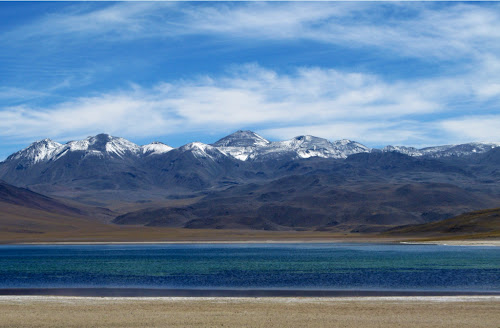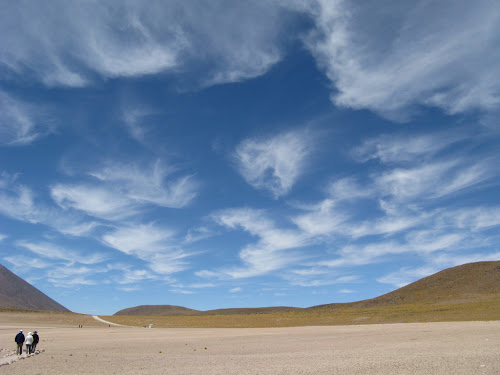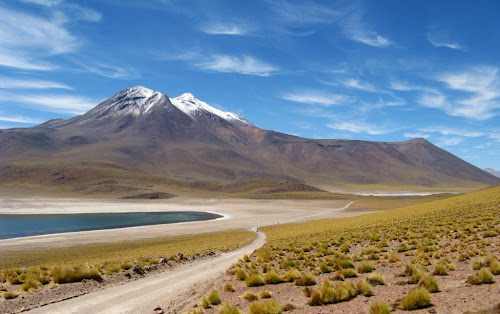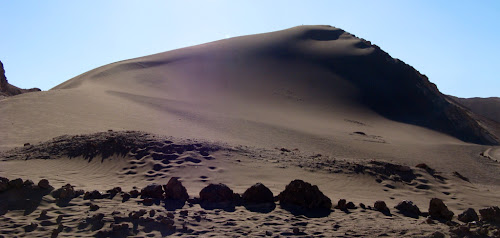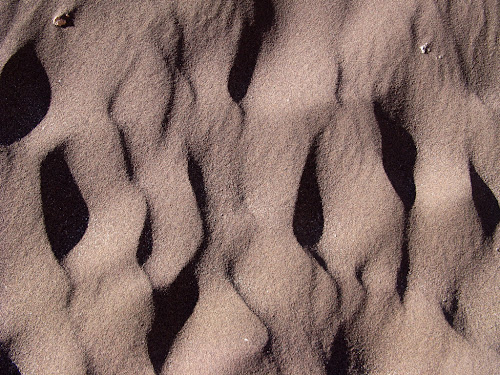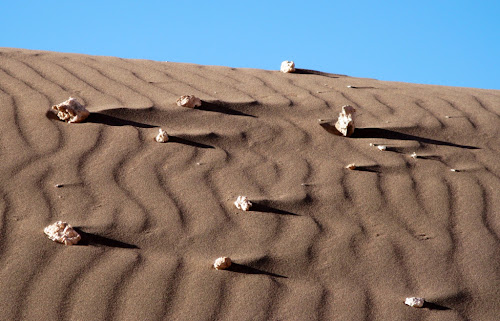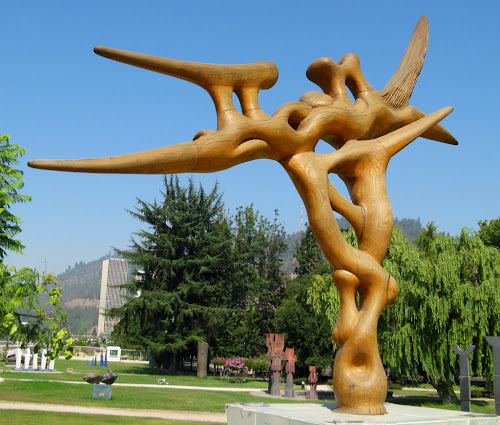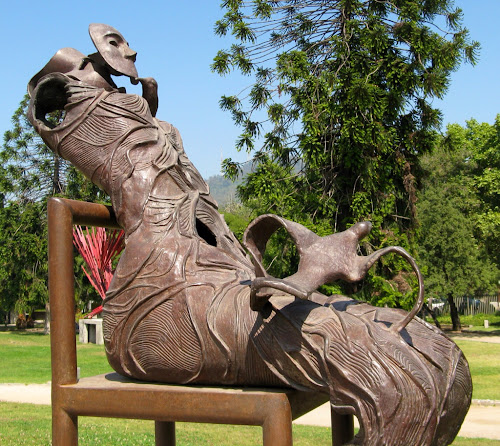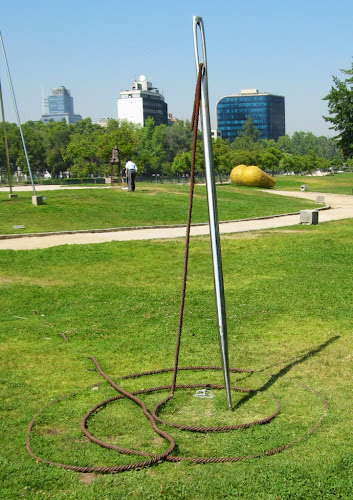Day three (January 26th) of our Atacama sojourn started early; we were picked up at the hotel at 0500 for a predawn run to the El Tatio Geyser Field, the highest in the world at 14100'+ msl. The group now consisted of RuthAnn and me and would be that way for the next two days. The 95 km dirt road was mostly hard pack and fairly fast; our driver sped through the dark passing 14 other vehicles until we got off on the wrong track and almost got stuck in the deep sand in the process. Three of the vehicles we had passed now got their revenge and moved ahead of us on the rush to get to the geysers at dawn. Two faster small pickups also edged past on the now very rough and washboard road; so we had a net gain of nine vehicles on the way to the geysers!!
The geyser field lies in a huge caldera and the reason for early arrival is to see them when it is cold and the steam is at its maximun; later in the day when the temps rise the steam is not as evident, sort of like being able to see your breathe on a cold day in Wisconsin! We were glad that we had heeded the advice of the tour company to bundle up and bring a warm hat and gloves as the temperature was probably about 25° in the shadow of the caldera lip; once the sun rose enough to clear the edge of the caldera the temps rose quickly.
Breakfast was served after walking through the mists and rising columns of steam. Freshly brewed coffee (our guide, Leo, warmed up the chocolate milk for our cafe mocha by immersing the box of milk in one of the hot pools!), bread, cheese, ham and cake made for a nice, but cool outdoor breakfast.
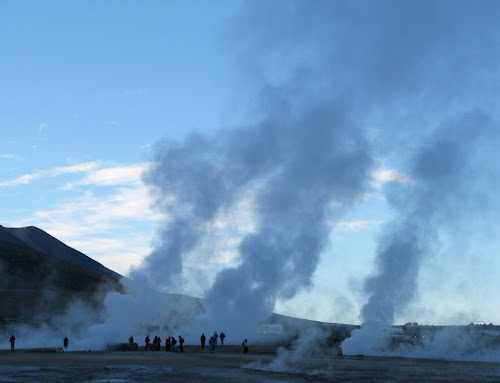 |
| El Tatio Geysers |
 |
| RA staying warm |
 |
| RA and Leo's niece |
 |
| Our speedy Sprinter |
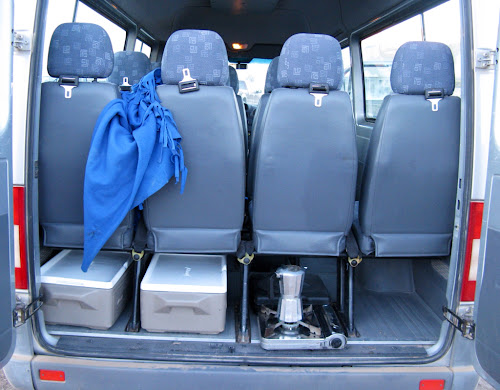 |
| Coffee brewing |
 |
| Breakfast spread! |
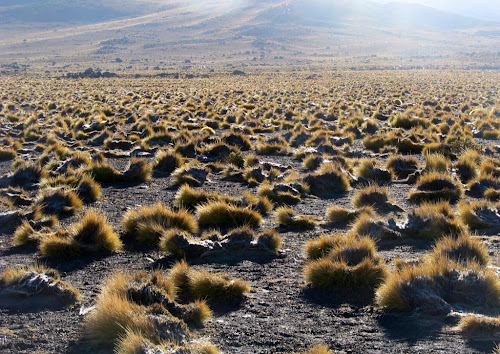 |
| Vegetation in the caldera |
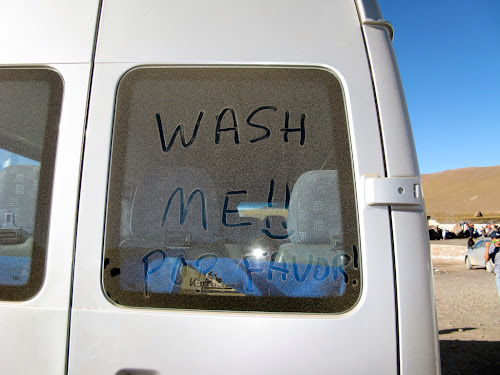 |
| Dirty truck! |
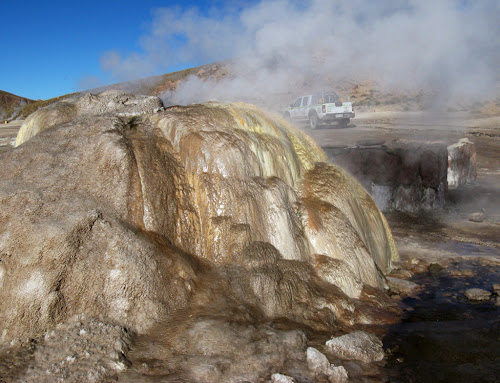 |
| Mineral formation |
 |
| RuthAnn "explaining" something to Leo! |
On the way back to San Pedro we were able to see all of the scenery we missed in the early darkness.
In the dark run to the geysers we noticed that the road was well marked with reflective signs and reflectors on the dirt road surface.
 |
| Reflector glued to dirt--wonder how long it stays there! |
We stopped at the small Atacameño village of Machuca before returning to San Pedro. A deep fried cheese empanada really hit the spot.
 |
| Machuca |
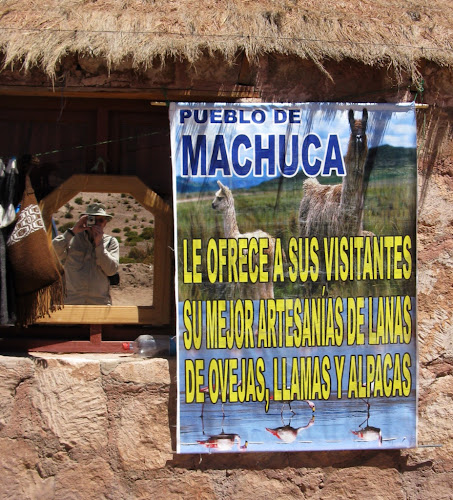 |
| Self portrait--tough shot because the wind kept moving the mirror! |
 |
| Church bell tower--not quite Pisa, but on its way! |
 |
| Thatched roofs |
 |
| Most of the homes in Machuca have a cross on the roof |
 |
| RA found a friend in Machuca! |
After an afternoon rest we headed out again about 1630 to visit a couple of sink holes that served as local swimming spots and the salt lagoon of Tebinquinche.
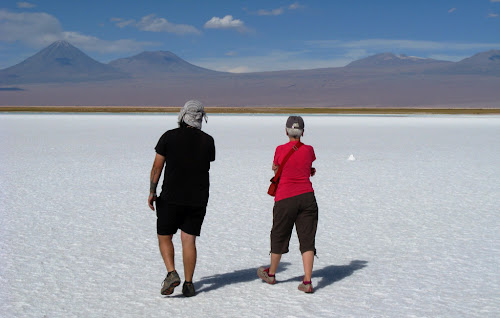 |
| RA and Leo on the salt at Tebinquinche |
 |
| Reflections at Tebinquinche |
The last destination for this long day was Laguna Sejar; a small salt lake that has a 40% concentration of salt. The objective here was to "float" not swim!! It was not a pretty sight as two retirees from De Pere tottered out past the underwater rocks to where it was deep enough to float along on our backs occasionally hitting a rock with our bums. We lay there with our feet high and dry above the salty brine thinking we would tip head over heels, but that did not happen. The squeals of delight from the children and giggles of the adults made for a fun time. We got as close to the shore as we could before staggering to an upright position to dry off, hop in the van, and head back to the hotel. There is no photographic evidence of this venture so you will have to take our word for it!!





